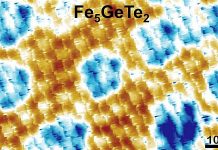
Scientists from Durham University and Kings College London have presented a theoretical review in a new study strongly supporting the search for axion dark matter.
The identity of dark matter, which makes up 85% of the matter in the universe, is one of the big unanswered questions in particle physics.
Scientists know of its existence because of its gravitational pull effects on stars and galaxies but what kind of particle it is, still remains a mystery.
The researchers analysed how axions can be described mathematically and presented how they relate to the fundamental symmetries of the Standard Model of particle physics.
The axion explains why the strong interaction – the force that binds together quarks in protons and neutrons – obeys time reversal symmetry. This means that, at the subatomic level, processes caused by the strong interaction would look the same if the direction of time was reversed.
Why the strong interaction obeys time reversal symmetry is still unknown. The axion is a popular solution to this mystery.
Axion dark matter behave more like a field covering the universe than like individual particles. In the early universe, the value of the axion field begins to oscillate back and forth. The energy stored in these oscillations is axion dark matter.
It is known that dark matter of any kind can only interact very weakly with light, or else it would have been seen by scientists already.
Axion dark matter interacts with light very weakly, but by looking closely at telescope observations the researchers might be able to see signs of this interaction.
For example, a photon (a particle of light) travelling through a magnetic field would have a small probability of turning into an axion. This process would cause unusual features in telescope observations of galaxies shining through magnetic fields.
The full analysis of the study was published in Science Advances. A companion review paper – “Axion Dark Matter: How to see it?” by Yannis Semertzidis and SungWoo Youn – shows how the axion could be detected in the lab soon.
Study co-author, Dr Francesca Chadha-Day, said: “It is a very exciting time to be an axion physicist. Nobody yet knows the identity of dark matter. By searching for different possibilities, such as the axion, we hope to one day solve this mystery.”
The researchers hope that this review will increase interest and understanding of axion physics within the broader community of physicists and scientists.



